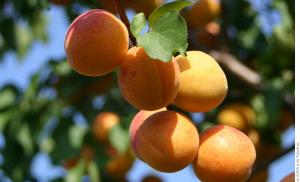What countries are located in the tropical zone? Natural zones of the tropical zone Geographical position of the tropical zone and availability.
The air temperature here is constant (+24° -26°C), at sea temperature fluctuations can be less than 1°. The annual amount of precipitation is up to 3000 mm, and in the mountains of the equatorial belt, precipitation can fall up to 6000 mm. More water falls from the sky than evaporates, so there are many wetlands and dense, moist forests - jungles. Remember the adventure films about Indiana Jones - how hard it is for the main characters to make their way through the dense vegetation of the jungle and escape from crocodiles who love the muddy waters of small forest streams. All this is the equatorial belt. Its climate is greatly influenced by the trade winds, which bring abundant rainfall from the ocean.
Northern: Africa (Sahara), Asia (Arabia, south of the Iranian Highlands), North America (Mexico, Western Cuba).
Southern: South America (Peru, Bolivia, Northern Chile, Paraguay), Africa (Angola, Kalahari Desert), Australia (central part of the mainland).
In the tropics, the state of the atmosphere over the mainland (land) and the ocean is different, therefore, a continental tropical climate and an oceanic tropical climate are distinguished.
The oceanic climate is similar to the equatorial one, but differs from it by less cloudiness and steady winds. Summers over the oceans are warm (+20-27°С), and winters are cool (+10-15°С).
Above the land-tropics (mainland tropical climate), a high-pressure area prevails, so rain is a rare visitor here (from 100 to 250 mm). This type of climate is characterized by very hot summers (up to +40°С) and cool winters (+15°С). The air temperature during the day can change dramatically - up to 40 ° C! That is, a person can languish from the heat during the day and shiver from the cold at night. Such drops lead to the destruction of rocks, the creation of a mass of sand and dust, so dust storms are frequent here.
Photo: Shutterstock.com
This type of climate, as well as tropical, forms two belts in the Northern and Southern hemispheres, which are formed over the territories of temperate latitudes (from 40-45 ° North and South latitude to the Arctic Circles).
In the temperate zone, there are many cyclones that make the weather capricious and give out either snow or rain. In addition, westerly winds blow here, which bring precipitation all year round. Summer in this climatic zone is warm (up to +25°-28°С), winter is cold (from +4°С to -50°С). The annual precipitation is from 1000 mm to 3000 mm, and in the center of the continents only up to 100 mm.
In the temperate climate zone, unlike the equatorial and tropical, the seasons are pronounced (that is, you can make snowmen in winter and swim in the river in summer).
The temperate climate is also divided into two subtypes - maritime and continental.
Marine dominates the western parts of North America, South America and Eurasia. It is formed by westerly winds blowing from the ocean to the mainland, so it has rather cool summers (+15 -20°С) and warm winters (from +5°С). Precipitation brought by western winds falls all year round (from 500 to 1000 mm, in the mountains up to 6000 mm).
Continental prevails in the central regions of the continents. Cyclones penetrate here less often, therefore, there are warmer and drier summers (up to + 26 ° C) and colder winters (up to -24 ° C), and the snow lasts a very long time and melts reluctantly.

Photo: Shutterstock.com
polar belt
It dominates the territory above 65°-70° latitude in the Northern and Southern Hemispheres, therefore it forms two belts: the Arctic and the Antarctic. The Polar Belt has a unique feature - the Sun does not appear here at all for several months (polar night) and does not go below the horizon for several months (polar day). Snow and ice reflect more heat than they receive, so the air is very cold, and the snow does not melt almost all year. Since an area of high pressure is formed here, there are almost no clouds, the winds are weak, the air is saturated with small ice needles. The average summer temperature does not exceed 0°С, and in winter it is from -20° to -40°С. Rain falls only in the summer in the form of tiny droplets - drizzle.
Between the main climatic zones are transitional, having the prefix "sub" in the name (translated from Latin "under"). Here, the air masses change seasonally, coming from neighboring belts under the influence of the Earth's rotation.
a) Subequatorial climate. In summer, all climatic zones shift to the north, so equatorial air masses begin to dominate here. They shape the weather: a lot of precipitation (1000-3000 mm), the average air temperature is +30°C. The sun reaches its zenith in spring and scorches mercilessly. In winter, all climatic zones shift to the south, and tropical air masses begin to dominate in the subequatorial zone, winter is cooler than summer (+14 ° C). There is little rainfall. Soils dry out after summer rains, so in the subequatorial zone, unlike the equatorial zone, there are few swamps. The territory of this climatic zone is favorable for human life, therefore it is here that many centers of the emergence of civilization are located.
The subequatorial climate forms two belts. The northern ones include: the Isthmus of Panama (Latin America), Venezuela, Guinea, the Sahel desert belt in Africa, India, Bangladesh, Myanmar, all of Indochina, South China, part of Asia. The southern zone includes: the Amazonian lowland, Brazil (South America), the center and east of Africa and the northern coast of Australia.
b) Subtropical climate. Tropical air masses prevail here in summer, and air masses of temperate latitudes prevail in winter, which determines the weather: hot, dry summers (from + 30 ° C to + 50 ° C) and relatively cold winters with precipitation, and stable snow cover is not formed.
c) Subpolar climate. This climatic zone is located only on the northern outskirts of Eurasia and North America. In summer, humid air masses come here from temperate latitudes, so the summer is cool here (from + 5 ° C to + 10 ° C). Despite the small amount of precipitation, evaporation is low, since the angle of incidence of the sun's rays is small and the earth warms up poorly. Therefore, in the subpolar climate in the north of Eurasia and North America, there are many lakes and swamps. In winter, cold arctic air masses come here, so the winters are long and cold, the temperature can drop to -50°C.
There are 13 such countries. These are Australia, Algeria, the Bahamas, Bangladesh, Egypt, not all recognized Western Sahara, China, Libya, the UAE, Paraguay, Saudi Arabia, Taiwan and Chile.
In these states, the so-called trade winds arise - winds that walk through the tropics all year round. In the Northern Hemisphere they blow from the northeast, and in the Southern Hemisphere from the southeast.
Residents of the countries described above, like no other, feel the influence of pronounced seasonal changes in ambient temperature. And they are especially strong not on the islands, but in the zone: the deeper, the stronger.
As for precipitation, they are not too plentiful - only 50-150 millimeters per year. Exceptions to this rule are only the coasts of the continents, to which the long-awaited moisture comes from the oceans. For example, in the tropical zone of the African continent, precipitation falls in winter, and in summer they are almost completely absent.
Countries with more than half of their area in the belt
This one is more extensive. The largest of them are Ethiopia, banana Ecuador, Philippines, Uganda, Chad, Thailand, Tanzania, Sudan, USA, Somalia with its pirates, Rwanda, Peru, Panama, Oman, Nicaragua, Mali, Malaysia, Congo, Kenya, Cameroon, Zambia , Dominican Republic, Vietnam, Yemen, Brunei and others. There are more than 40 such countries in total.
Tropical territories provide about a quarter of the world's land with various types of soil formation, diverse flora and fauna.
Geographers attribute part of the tropical to the ancient continent Gondwana, and, according to the present location of land on, it is in this zone that most of the earth's coral reefs, including the Great Barrier Reef, are located.
The Great Barrier Reef, which stretches along the northeast coast of Australia, is considered the largest coral formation in the world. The length is 2.5 thousand kilometers, the area is 344 square kilometers.
There are also mountainous states in the tropical zone, and in both hemispheres. They have a more variable climate than countries without noticeable elevations. Nevertheless, there are relatively few such territories, since semi-desert and desert landscapes still prevail.
It is the hot climate in the tropical zone that makes many states located in it a “tidbit” for tourists who love to bask in the sun and swim in salty sea water.
1. Tropical belt. In the northern and southern hemispheres between latitudes 20-30 ° there is a tropical zone. On the border of this belt in the inner and western parts of the continents, a tropical desert zone has been formed. Famous desert Sahara in Africa is included in this zone.
The climate of the tropical desert zone is very hot and dry. The air temperature rises to +58°С, and the soil surface warms up to +90°С. Precipitation everywhere does not reach 100 mm. There is a period when not a drop of rain falls for several years in a row. Vegetation is very sparse, and in some places completely absent. Clay and rocky deserts are especially unsightly. Small vegetation is found along the channels of former rivers, in rock crevices.
From plants well adapted to desert conditions, a date palm grows in the oases of the Sahara, and a cactus grows in the deserts of North America (Fig. 88, 89).
Rice. 88. Cactus.

Rice. 89. Date palm.
The date palm takes its roots to a depth of several tens of meters, the cactus has thorns instead of leaves for less evaporation of water. In North America, a giant cactus grows up to 15 meters high. It accumulates up to 1 ton of water. If you cut a branch of a cactus, cut it and chew it, then this can completely quench your thirst.
There are a lot of different snakes, lizards, insects in the deserts. Large animals and birds live only near oases.
In the eastern parts of the Australian mainland, deciduous rainforests and dry tropical forests are common.
Moist forests grow in places where there is a lot of rainfall and where the wet season follows the dry season. Trees shed their leaves during the dry period. Evergreens in most cases grow in the lower floors.
Trees thin out in dry forests. Eucalyptus forests in eastern Australia are especially striking.

Rice. 91. Eucalyptus.
Height eucalyptus tree(Fig. 91) reaches a height of 100 m, the bark is thick and fire-resistant, slowly ignites. The tree sheds its bark every year so as not to impede its growth. It is not easy to deliver water to such a height. For less evaporation of water, the leaves are located sideways to the sun. Since the crown of the tree is narrow, it gives very little shade. A marsupial bear lives on the branches of a eucalyptus tree - koala(Fig. 90).

Rice. 90. Koala.
Where the climate is drier, tropical savannahs are located instead of forests.
2. Subtropical belt. At latitudes of 30-40 ° of the northern and southern hemispheres, between the tropical and temperate zones, there is a subtropical zone. It differs from the tropical zone by a large change in temperature over the seasons. Nevertheless, the average temperature of all months is positive (from +4°С to +20°С).
Therefore, plants grow throughout the year. The climate of all the continents of the belt in the western, inland and eastern parts differs from each other. In the western areas near the ocean, subtropical dry continental climate with dry summers, wet winters, in the east - monsoon climate with abundant summer rainfall.
Individual natural zones correspond to these types of climate. In the subtropical zone, variable-moist evergreen forests, hardwood forests and shrubs, deserts and semi-deserts are distinguished. They have a common feature for all - a warm winter, but in many parts there is a clear difference between hot summer, moderately cool winter seasons.
The zone of variable-moist evergreen forests is widespread in the east of Eurasia and, in addition, has been preserved in the southeast of North America and in Brazil. These forests are associated with a monsoon climate with dry winters and rainy summers.
The warm subtropical climate is favorable for the growth of evergreen trees with beautiful flowers - magnolia, laurel, beech, cypress. From the many ferns climbing on the trees, these forests look like equatorial evergreen forests, they grow on red and yellow subtropical soils.
Hard-leaved evergreen forests and shrubs consist of plant species adapted to the Mediterranean climate. They do not shed their leaves even during the dry period and remain evergreen throughout the year. Since the leaves are small, very hard and smooth, the plants evaporate little water.
The nature of the forests of the subtropical zone has changed greatly under the influence of human activities. Currently, forests have been cut down and citrus crops, vineyards, and orchards are growing in their place.
Subtropical deserts and semi-deserts form entire bands on all continents.
By natural conditions, subtropical deserts are a direct continuation of tropical deserts.
1. On a contour map, mark the tropical and subtropical zones.
2. On the map, find the largest tropical deserts in the world.
3. What is the peculiarity of deciduous tropical rainforests?
4. What zones does the subtropical belt consist of?
Climatic zone - a geographical latitudinal band that differs from neighboring bands in the amount of solar radiation and atmospheric circulation. According to Alisov's classification, thirteen climatic zones (belts) are distinguished: seven main ones with the main influencing air mass of the same type and six transitional ones with a change in the prevailing air masses depending on the season. The average position of climatological atmospheric fronts determines the boundaries of the zone: winter - polar and summer - tropical.
Where is the tropical climate zone located?
There are two tropical climatic zones: northern and southern. They are geographic. They are located between the subequatorial belt and subtropical. Geographically, these are territories located between twenty and thirty degrees north or south latitude.
Characteristics of the tropical climate zone
In a tropical climate, it is always warm or hot: the average winter temperature does not fall below fourteen degrees, the average summer temperature is about thirty-three degrees. Of the winds, the trade winds blowing all year round prevail, turning into monsoons in the Indian Ocean. In winter, cyclones rage in Africa. The rainy period is pronounced. Seasonal temperature changes are pronounced, especially significant - on the mainland.
Climate of the tropical climate zone
Depending on the latitude, the tropical climate is divided into trade winds, continental dry, monsoon and mountain monsoon.
trade wind climate.
It is a tropical maritime climate, dominated by the ocean, with a little grip on Central America and the coast of Australia in the east. The realm of trade winds and anticyclones. Temperatures are moderately high, summer within twenty-three degrees, winter within thirteen degrees. The temperature annual amplitude is about ten degrees. Precipitation is light, but almost always cloudy.
tropical dry
This is a kind of climate over the continent with a year-round predominance of tropical air. The wind regime is unstable, anticyclones can be replaced by diffuse summer depressions. Captures African, Arabian, Californian, deserts. It's dry and cloudless here. Summer is very hot, in some places the temperature rises to fifty-eight degrees (one of the hottest places in the world), on average - about thirty-three degrees.
The winter temperature is not lower than ten degrees, on average - about sixteen degrees. The annual temperature amplitude is about eighteen degrees, which is quite a lot for the tropics, and the daily temperature can reach forty degrees. Precipitation is a rarity, but not only dust whirlwinds are frequent, but also sandstorms. The coastal strips of deserts are characterized by constant dense fogs with an almost complete absence of precipitation and an almost constant annual temperature amplitude.
tropical monsoon
Tropical monsoon kingdom. Captures the Indian Ocean and part of the Pacific, South Asia, part and. Over the ocean, the temperature regime is very similar to the equatorial one - the temperature is about twenty-five degrees all year round.
Above the earth's surface, the annual amplitude, depending on latitude, varies from very small, four degrees, in Brazilian Cuiab to twenty-four in Shanghai, China. Rainfall is very uneven. Humidity and cloudiness are also seasonal - maximum in summer, minimum - in winter. In the Eritrean city of Massawa, the average annual temperature is thirty degrees with an annual amplitude of nine degrees. The typical landscape of this climate is the savannah.
Monsoon climate of tropical plateaus
This is a hybrid of climates: alpine and tropical monsoon. It captures the Ethiopian and Yunnan-Guizhou highlands, the Deccan plateau, such plateaus as Haud, Yata, Marra, Shan, Kasai, Korat, Mato Grosso, Nasca, Kimberley, Atherton, Barkley. Annual fluctuations in temperature are about five degrees, daily - about twenty. The absolute temperature on the plateau is much lower than on the plain - in winter it can sometimes please with snow, and the temperature can go into a slight minus. Rainy period in summer.
Precipitation of the tropical climate zone
Since the tropics are a zone of high atmospheric pressure, there is not much precipitation.
In the trade wind climate zone about five hundred millimeters of precipitation falls annually. The exception is places with special orographic conditions. For example, the Waialeale volcano, located on the island of Kauai, is the rainiest place in the world. Rain lasting two hundred and forty-seven days is listed in the Guinness Book of Records, the average rainfall is 11684 millimeters, the maximum is 16916 millimeters. These records were set on the windward slope of Vaialeale, on the leeward slope only five hundred and sixty millimeters of precipitation falls - twenty times less. In the open ocean, heavy rains are brought by infrequent tropical cyclones, and in the intervals between them it is quite dry, since even with a completely overcast sky, precipitation does not fall - they do not condense sufficiently.

Tropical dry climate zone and precipitation falls from one hundred to two hundred and fifty millimeters, and they are extremely rare. Sometimes all the annual rainfall can fall on one day, for example, eighty millimeters can fall in one day of heavy rain in the Sahara - almost the annual rate. Sometimes there is no rain for several years. The coasts of coastal deserts, such as the Namib, Sahara or Atacama, enjoy even twenty millimeters of precipitation per year, most often they do not have this, but receive moisture from thick coastal fogs.
In the tropical monsoon zone climate, precipitation is distributed extremely unevenly, but the rainy period occurs in the summer. The greater the latitude, the less rainfall. The driest place is the capital of Sudan, Hatum. During the year, only one hundred and thirty-five millimeters of precipitation falls here, and all the rains fall in the summer. Most of the rain falls in India - about five thousand millimeters a year. The exception is the Indian city of Cherrapunji - almost the wettest and rainiest place on Earth. Due to the special orographic conditions of precipitation, 11,777 millimeters per year falls here, and almost all of them fall in the summer.
In the monsoon climate zone of tropical plateaus there is little precipitation - a little more than a thousand millimeters per year with a pronounced rainy period.
Natural zones of the tropical climate zone
Depending on the degree of moisture, semi-deserts, savannahs and tropical forests are located in the tropical climatic zone.
A significant part of the tropical belt is occupied deserts and semi-deserts.
Tropical deserts and semi-deserts- dry and hot, their flora and fauna is extremely scarce and monotonous. The desert is not always sand, although in the minds of the majority the desert looks like that. Most often, deserts are not sandy, but clayey, sandy-pebbly, saline or rocky. The poor soils of deserts are often saline. After heavy rain, the water table rises. Through soil capillaries, groundwater rises to the surface along with the salts dissolved in them and evaporates, leaving the salt carried out on the surface. Permanent rivers in the desert are a rarity. Lakes are also rare, and their water is most often salty. The hot and dry climate of tropical deserts provides an area of constant high pressure with downward air currents. Precipitation is extremely rare and short, although plentiful. Often, raindrops simply do not reach the surface, evaporating into the air. Semi-desert is a transition zone between desert and savannah. The boundaries between desert and semi-desert, semi-desert and savannah are often blurred, and even environmentalists do not always have a common opinion on this issue.
Savannah- This is a hot transitional zone between semi-desert and forest. Savannahs, like deserts, are different. Depending on the amount of precipitation, they are woody, tall grass, cereal, desert. Precipitation in the savannah is strictly seasonal - it only rains during the rainy season. That is why many do not see the difference between the savannah and the steppe, but it is. In the savannah, unlike the steppe, not only grasses grow, but also shrubs and real trees, occasionally forming entire forests. In the dry season, the savannah dries up, which provokes fires; in the rainy season, the same areas can become swampy.
topical forests, depending on the amount of precipitation and the severity of the dry period, are seasonal and wet. Tropical rainforests grow in places without a pronounced dry period. They are mangrove, swampy and evergreen mountainous. Seasonal tropical forests, depending on the length of the dry period, are evergreen, semi-evergreen, light sparse and deciduous. Deciduous forests, in turn, are divided into monsoon, savanna and prickly xerophilous.
The nature of the tropical climate zone
The nature of the tropics is surprisingly diverse. Everything is here: seas, oceans, beaches, mountains, gorges, highlands, rivers, lakes, impenetrable rainforests, savannahs, mangroves, volcanoes, deserts. It is here that the rainiest and driest place in the world is located. Somewhere it does not rain for decades, but somewhere it goes on without ceasing, almost a whole year. Somewhere huge trees are violently overgrown with lianas and epiphytes, and somewhere lichen barely survives, somewhere banyan tree grows, and somewhere wolfia, somewhere in the river a crocodile patiently waits for its prey, and somewhere a small darkling moisture from the fog. In the tropical zone, there are many natural reserves and reserves with unique ecosystems of rare and endemic plants and animals.
Plants of the tropical climate zone
Plants in the tropical zone are very diverse. The species composition and density of vegetation and the uniformity of its distribution depend on the amount of precipitation in a particular tropical region and the presence of a dry period.
The rainforest is home to almost seventy percent of all plants and animals on earth. No one knows how many tropical plants have not yet been described. This forest is characterized by multi-tiered, almost complete absence of shrubs, huge (up to the height of modest trees of temperate latitudes) grasses, creepers, epiphytes, evergreen trees with characteristic large and hard leaves, caulifloloia and ramifloria. A great variety of exotic plants grow here.

Trees: Ravenala (traveler's tree), Shorea (tallow tree), sequoia, cotton tree (ceiba), ant tree, terebuia, guaiac tree, triplochiton, purple tree (amaranth), balsa tree, nuclea, lofira, gabaurtia, wenge, astronium , Dalbergia, African teak, Swartzia, Quebracho, Cocobolo, Limba, Cumaru, Svitaniya, Haya, Entadrophragma, Pterocarpus, Dalbergia, Teak, Berchemia, Black Poison Tree (Chechem), Cordition, Ebony, Jatoba, Mangiflera (Mango), melon tree (papaya), coffee tree, theobroma (cocoa), perseus (avocao), cinnamon, nutmeg, cucumber tree.
There are relics - herbal trees: pandanus, dazipogon, bacteria, kingia, xanthorrhea. Herbaceous plants: bamboo, banana, sesame, sugar cane, cardamom, turmeric, ginger. Creepers: vanilla, pepper (black, African, cubeba), passionflower (passion fruit, chulyupa, granadine, tajo). Shrubs: Pimento officinalis (allspice), Sanse (Japanese pepper). Epiphytes and semi-epiphytes: orchids, many ferns, bromeliads, strangler ficuses (golden, Bengal - banyan), cacti (schlumberga, epiphyllum, hatiora, ripsalis, hamedorea, hylocereus). Predatory: sundew, zhiryanka, nepentis.
In the savannas, everything is much more modest. The main plants are hard-leaved grasses. Much less perennial grasses, shrubs, shrubs, small trees. All savanna plants are very hardy - they are adapted to drought, fires, animals. Grasses such as bearded man, elephant grass, aristida, millet, bermuda grass grow in the savannah. Trees: acacia, combretum, mongongo, persimmon loquat, oil palm, oil tree, pandanus, bauginia, doum palm, baobab, terminalia, eucalyptus.
In the desert, vegetation is very modest. These are mainly grasses, succulents and halophiles. Succulents: various cacti (pereskia, mauenia, prickly pear, coryphantha, echinocactus, lophophora, mammillaria, obregonia, peleciphora, ancistrocactus, cereus, cypocereus, melocactus, acanthorypsalis, copiapoa, synthia, parody, carnegia, pachycereus, trichocereus, pteronocactus), spurge, aloe, crassula (aeonium, aichrizon, crassula, echeveria, graptopetalum, kalanchoe). Herbs: sand-loving, wheatgrass, millet, triostnitsa, field grass. Halophiles: azhrek, sodnik, sarsazan. Endemic and relic plants: velvichia, nara, olives, mastic, cypress. Among herbs, there are a lot of ephemerals: for flowering, full-fledged production and seed maturation, they need only about two weeks.
Animals of the tropical climate zone
The fauna of the tropics is huge and diverse. The largest and smallest animals are found here: ostriches and hummingbirds, elephants and tiny bats.
The rainforest fauna is rich in species composition and scarce in the number of representatives of each species. Most of all here are animals living in the crowns of trees, terrestrial - much less.
Animals: alligators, crocodiles, monkeys, elephants, squirrels (including flying squirrels), rhinoceroses, sloths, giraffes, spiny tails, tapirs, deer, pigs, antelopes, otters, mongooses, needlewools, peccaries, insectivores, anteaters, buffaloes, lemurs, predators (lions, tigers, fishing cats, jaguars, leopards), hippos, okapis, sloths, aguars, barasigna, manatees, dolphins, dugongs, porpoises, bats.
Birds: parrots, hoatzins, woodpeckers, craxes, hummingbirds, peacocks, toucans, passerines, kalaos, eagles. Reptiles: snakes, chameleons, lizards (agamas, iguanas, geckos). Amphibians: chkrkpahi, frogs, toads.
arthropods: insects (termites, ants, butterflies, centipedes, beetles, mosquitoes (Culexes and Anopheles), flies (including tse-tse)), mosquitoes, arachnids (spiders, phrynes, tartarids, ricinulei), crustaceans (crabs, shrimp, lobsters) , worms, shellfish, fish (eg mudskippers in mangroves).
In the savannas, on the contrary, the species diversity is much less, and the number of representatives of each species is much larger, and all of them in one way or another are forced to adapt to survive during the drought. Large animals migrate to places where there is no drought yet or rain has miraculously passed, small ones fall into hibernation. There are many herbivores and predators in the savannah.
Tcarnivores: elephants, rhinos, antelopes, giraffes, zebras, donkeys. Predators do not let them relax: cheetahs, lions, leopards, hyenas, jackals.
small mammals: meerkats, jerboas, rabbits, hares, pikas, porcupines.
Birds: flamingos, eagles, ostriches, crows, guinea fowls, weavers, shrikes, secretary birds, hornbills, bustards, marabou, cranes, peacocks, storks. There are amazing animals: armadillos, aardvarks, pangolins, anteaters.
Insects: ants, termites, locusts, spiders. There are many snakes in the savannahs, poisonous and not.
Only the most hardy animals live in deserts, able to endure not only a long drought, but also large daily temperature fluctuations. Ungulates, rodents, reptiles, spiders and insects survive in the deserts. Many animals are forced to lead a nocturnal lifestyle.
mammals: rodents (gerbils, jerboas, hares), ungulates (camels, antelopes, gazelles, moufflons, llamas, zebras, wild donkeys, rams and goats), predators (hyenas, jackals, coyotes, foxes, cheetahs, lions, leopards, cougars, honey badgers, mongooses, meerkats, hedgehogs), rodents (gerbils, marmots, ground squirrels, mice, hares, tuko-tuko). Of the birds in the deserts of the tropical zone, ostriches, guinea fowls, crows, owls, falcons, vultures, vultures, vultures, bustards, drongos, weavers, larks, sand grouses live. About half of all birds are migratory.
There are many lizards: monitor lizards, geckos, belttails, iguanas, chuckwells, skinks, chameleons. Lots of snakes: cobras, rattlesnakes, vipers. There are arthropods: scorpions, spiders (tarantulas, tarantulas), insects (grasshoppers, locusts, beetles (dark beetles), flies, fleas, ants, termites, wasps). In the coastal areas of the deserts there are many waterfowl, in coastal waters - corals, fish and other marine life.
Countries of the tropical climate zone
The tropical zone captures almost all parts of the world, except for Europe and Antarctica. Both tropical zones pass through Africa at once - both southern and northern.
Africa. Northern tropics. Includes Niger, Algeria, Sudan, Mauritania, Mali, Libya, Chad and Egypt. Southern tropics. Includes Angola, Zambia, Namibia and Botswana.
Asia. Northern tropics. Includes India, Yemen, Oman and Saudi Arabia.
North America. Northern tropics. Includes some regions of Cuba and Mexico.
South America. Southern tropics. Includes Bolivia, Brazil, Paraguay, Peru, some regions of Chile.
Australia. Northern tropics. Includes the central part of Australia.
The tropical climatic zone covers the globe from the 20th to the 30th parallels in the northern and southern hemispheres. These areas generally have clear weather throughout the year, and the air temperature depends on how high the Sun rises above the horizon. In summer the air warms up to +30°С. Although sometimes it can rise to + 45-50 ° C. In winter, the air is very cold, often to negative readings on the thermometer.
The air temperature can vary greatly during the day, when the sultry heat during the day is replaced by evening coolness and severe cooling at night. In the tropics, little precipitation falls - no more than 50-150 mm per year. Most of them occur during the winter months. These latitudes are very affected by the trade winds.
Types of climate in tropical latitudes
The tropical climate is usually divided into two categories, depending on the proximity of the territory to the ocean.

Continental: In the depths of the continents, the climate in tropical latitudes is hot and arid, with a large temperature difference. This is a region of high atmospheric pressure. The weather is mostly clear and cloudless. And sudden changes in temperature give rise to strong winds and dust storms.
The areas of distribution of the continental tropical climate in the western and eastern regions differ significantly. The western shores of South America, Australia and Africa are washed predominantly by cold currents, therefore, in tropical latitudes, the climate in these areas is cooler, the air rarely warms up by more than 20-25 ° C.
The eastern coasts of the continents are dominated by warm currents, so the temperatures are higher here, and there is more rainfall.

Oceanic: In coastal areas and over the oceans, a milder climate is developing, with an abundance of rainfall, warm summers and mild winters. This type of climate is very similar to the equatorial one, but is characterized by less cloudiness and strong winds. Precipitation falls mainly in the summer months.
Temperature values
(averaged, approximate for the tropical climate zone)
~ July +25 °С,
~ January +15 °С +20 °С.
Natural zones of the tropical climate zone
The tropics are dominated by three natural zones: forests, semi-deserts and deserts.

Tropical rainforests- this natural zone covers the eastern coasts of the continents. Such forests are common in Indochina, Madagascar, the West Indies, Florida, Australia, the islands of Oceania and the coast of the Gulf of Guinea.
In these forests, the world of flora and fauna is richly represented, a large number of endemics.

Variable rainforest or seasonal rainforest distributed north and south of the humid tropical. They differ from the latter in that they have fewer vines and ferns, and trees shed their leaves for the winter.

Tropical semi-deserts occupy vast territories, especially in Africa south of the Sahara. In South America, they are found in the north of the Atacama and Brazil, there is this natural zone also in Asia and Australia. Summer here is long and hot, the temperature often rises to +30°С, in winter it is not cold, as the temperature does not fall below +10°С. Due to the high evaporation, more precipitation falls, but in the winter months. Groundwater is very deep and often saline.

tropical desert cover most of the continents and western coasts of the tropics. They are at the mercy of the high pressure of the atmosphere, there is little precipitation, and the air here is so hot that the rain often evaporates before it reaches the ground. In tropical deserts, a very high level of solar radiation, strong winds prevail. Of the plants grow only those that are able to survive in conditions of extremely high temperatures and drought.
Tropical deserts are more common in Africa. The largest of them are the Sahara and the Namib.
Countries of the tropical climate zone

(Map of the Earth's climatic zones, click on the image to enlarge)
In Europe and Antarctica, the tropical belt is not represented. But in Africa, it is found twice: both northern and southern.
Africa: from the north - Algeria, Mauritania, Libya, Egypt, Chad, Mali, Sudan, Niger. The southern tropical belt in Africa covers Angola, Namibia, Botswana and Zambia.
Asia: Yemen, Saudi Arabia, Oman, India.
North America: Mexico, western regions of Cuba
South America: Bolivia, Peru, Paraguay, northern Chile, Brazil.
Australia is the central region.













